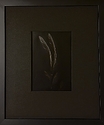Would use of a strong rehalogenating bleach followed by fixing allow me to get this silver into solution for subsequent recovery? Or is there something I'm missing here?
Like the first two responses say, yes, it ought to work.
The downside is that the amount of silver is really small. I don't have any actual silver loading numbers on b&w materials, but as a wild guess I'd say that an 8x10 inch sheet may contain somewhere around 1 or 2 cents (US) of silver. Give or take one or two factors of two. (I'm sure you can get better estimates if you want to work at it a bit.) Now, most of that silver typically ends up in the fixer unless your prints are largely black. Another wild guess is that, in a typical scene, perhaps 20% of the total silver is developed; this ~20% is the total amount of extra silver available when you bleach and fix your images. So, carrying on the wild guesses, you miglht be saving 1/5 to 2/5 cent of silver for each 8x10 inch print. Personally, I would not bother with it.
On a different note, if you really want to recover a bit more silver, I'm pretty certain there's some more to be had from your fixer - possibly more than from the test strips, and probably easier than bleaching test strips. But still probably pretty insignificant in the grand scheme of things.
My experience comes from a large studio chain outfit, where I spent considerable effort working on "effluent control" schemes. Most people don't realize how much silver can be (or is) lost to the wash water due to fixer carryover - the amount of fixer carried, by the wet paper, into the wash water. It's not possible to put a number on this loss, without a whole lot of specs, but if someone is processing in trays, with a one-stage fixer, heavily used, I would not be surprised if more than, say, 1/4 of their total silver was ending up in the wash water.
The trick, really, is to keep the silver concentration in the fixer tank as low as possible, AND keep the fixer carryout as low as possible. So it seems that you want to use the fixer only very slightly, AND use a squeegee on the paper before putting it in the wash. The big problem with this is that the fixer starts to get expensive, AND we have a hard time desilvering it (because it has a large volume at low silver concentration, the total "silver leakage" is greater). So our next step is a multi-stage fixer; this lets us reduce the amount of fixer used while still keeping the carryout silver the same. Squeegees between the two stages will help keep the second tank "cleaner." Etc., etc.
Anyway, I am not suggesting that you should do these things, just that there might be as much to gain here as by bleaching and fixing test strips.










